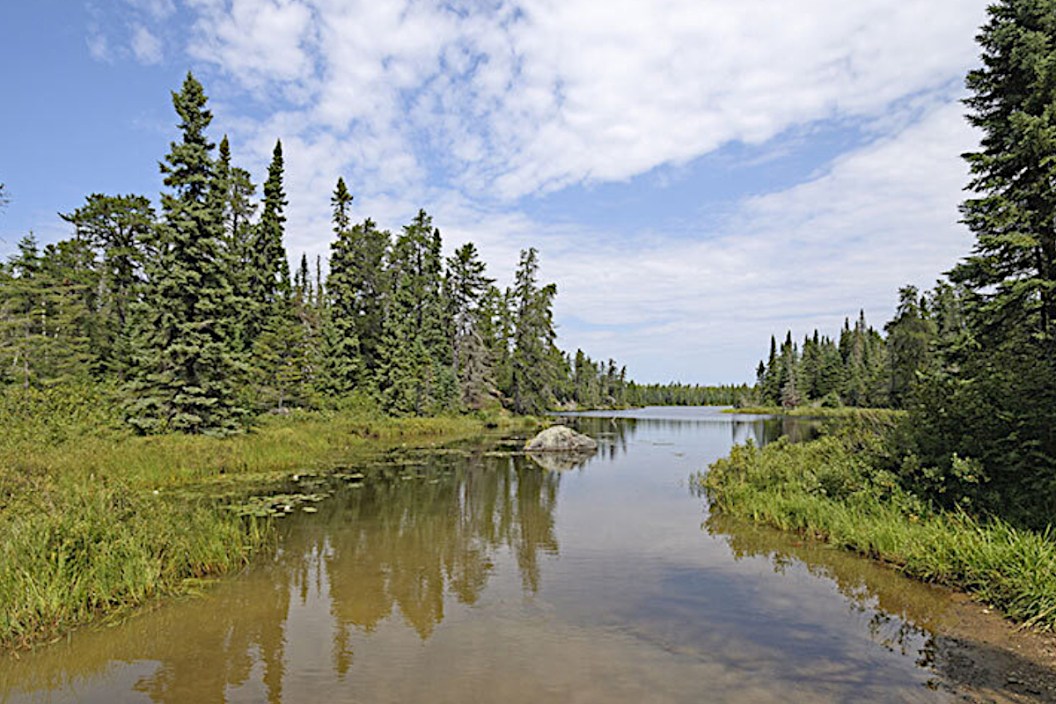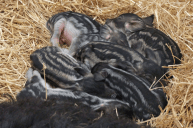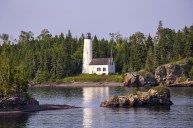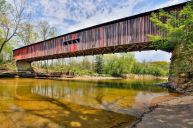Here is all you need to know about this legendary camping and fishing area.
Have you heard of Boundary Waters Canoe Area Wilderness (BWCAW)? If you haven't, you should take note.
This wilderness area located within the Superior National Forest in northern Minnesota near Lake Superior is one of the best places for canoeing, camping and fishing in the United States.
BWCAW features miles and miles of canoe routes and hiking trails that any outdoorsmen or women will love. Spend your time fishing and camping, or settle in under the stars for a spectacular showing from the Northern Lights.
Whatever you decide to do, once you go once, you will likely want to return. Here is all you need to know about this incredible area of the Northwoods.
A quick history
The Boundary Waters Wilderness area lies in a remote part of northeastern Minnesota and covers over 1 million acres of untouched wilderness.
Hundreds of thousands of years earlier, giant glaciers carved out nearly 1,100 lakes in the area. The area is so big and so remote that part of it spills over the Minnesota's boundary with Canada. On that side of Ontario, it is Quetico Provincial Park.
Historically, the BWCAW was home to Sioux and Ojibwe Native American tribes. The area saw its share of trappers and French explorers in the mid-1700s through the late 1890s.
Fortunately for paddlers and other outdoor enthusiasts everywhere, Minnesota's Forest Commissioner, Christopher Andrews, recognized the wilderness character of this area long before loggers could wipe it off the face of the earth forever.
In 1902 he convinced the state of Minnesota and Canadian officials that large swaths of this land had to be preserved and the provincial park and National Forest came soon after. Over the years, the area received more protections at state and federal levels to keep it wild and to limit motorized traffic through the Boundary Waters Canoe Area Wilderness Act. It is arguably one of the best things to happen to any wilderness watershed in recent memory and firmly established this area as canoe country.
Permit system
The U.S. Forest Service limits how many people enter the BWCAW via permits. It may sound like a pain, but limiting entry is part of what makes this area so special.
If you're coming into the area for any reason between May 1 and September 30, you're required to have a quota permit. Yes, even if you're only doing a day trip. Fortunately, they're easy to book online through the Recreation.gov website.
If you're planning on staying overnight in the area, you'll have to pay a $16 per person fee for adults and $8 for children under 18 years old. Don't forget to pick up your permit at the Forest Service office of your choice.
There are multiple entry points into the BWCAW, and you can choose to pick your permit up at one of several local businesses if you'd like.
You can also get a permit over-the-counter on location, but only if the quota for permits hasn't already been reached that day. If you want to explore one of the more popular districts like Kawishiwi or Gunflint District, it's worth reserving in advance because those permits sell out quickly.
It is also possible to cross the international border into Canada and explore Quetico Park. The U.S. Forest Service recommends getting a permit for a remote crossing at least eight weeks in advance of your trip from the Canada Border Services Agency.
Don't forget your passport and a Canadian nonresident fishing license if you plan to do any angling there.
Canoe Trips and Day Trips
Arguably, one of the most popular things to do in the BWCAW is to take a multi-night canoe trip over the more than 1,500 miles of canoe trails and pathways to portage your boat.
There are 2,000 designated camping spots within the wilderness, but most visitors never see another soul other than the people in their own party because the area is so large and because there are multiple BWCAW entry points.
There are special rules for camping in the area. One of the more notable ones is a total prohibition on aluminum cans and glass bottles. So, that means you'll probably have to leave the beer at home.
You also can't have more than nine people and four boats or canoes in your party. You are also required to pack out all your garbage because this is a wilderness area. There is no trash pickup when you are miles from civilization! Pack it in, pack it out.
Campfires are restricted to designated fire pits and you're only allowed to burn already dead wood from the area.
As far as campsite amenities go, you'll be roughing it in tents of your own or rent. There is no electricity out here, making it a perfect place to disconnect from the modern world for a bit. Some campsites have wilderness latrines for when nature calls.
Another thing to keep in mind is that sometimes the BWCAW puts fire restrictions in place, so make sure you have a good camp stove as a backup.
Otherwise, standard kayaking and canoe camping gear should work just fine for exploring this vast area. Keep in mind that you may have to portage from lake to lake (haul your canoe or kayak with you, typically on your shoulders and over your head), so packing light is vital.
If you don't have a lot of serious camping gear, don't worry. There are options to hire any of a number of canoe outfitters based in Ely, Minnesota and the surrounding areas. The great thing about the outfitters is they provide all the gear and often can do the trip planning for you. All you do is show up.
Hiring an outfitter isn't a bad idea for a more inexperienced camper, because they know exactly what gear you'll need and you won't be burdened with excess baggage.
Oh, and keep in mind that there are black bears in the BWCAW. Take precautions to properly store food and be bear safe while you're camping here.
If overnight camping isn't your thing, there are still plenty of ways to enjoy the area on day trips. One popular one is the hike to Eagle Mountain, the highest point in Minnesota. It's not quite as rugged as some hikes you might find in more western or southern states, but at seven miles round trip with an elevation gain of nearly 600 feet, it's a pretty good workout for a Midwestern hike!
Fishing
Fishing in a place over 1,100 lakes in a 1 million acre wilderness, where access to them is limited? If that doesn't get you anglers excited, we don't know what will. This limited fishing pressure is what gives the BWCAW such a great reputation as a world-class fishery.
Large and smallmouth bass, lake trout, walleye, northern pike and muskie can all be found in abundance here. Find the right lake and you'll run across fish that have never seen an artificial lure before! What better way to enjoy a camping trip than catching your own dinner while being serenaded by the call of the common loons on the lakes?
For lures, most anglers like to use jigs tipped with plastics or live bait for walleye. Spoons and spinnerbaits work well for pike, muskie and bass here. Topwaters can be deadly on a calm spring or summer evening for big bass.
Many anglers also swear by silver floating Rapalas and Rebel crawfish crankbaits as deadly "catch-all" types of lures in BWCA. The same goes for inline spinner baits like Mepp's Comets or bucktailed spinners. Part of the fun is not knowing exactly what you might catch on any of these lures.
There are areas you can use a motorboats, but most lakes limit the horsepower to 25 or less. Only a few lakes; Lac La Croix, Little Vermilion and Loon Lakes have no limits on what you can use. Check the regulations before you go.
If you're on a lake that allows motors, trolling big spoons or spinners deep is considered a go-to method for hauling up big lake trout.
Also, if you're willing to brave the cold, the ice fishing in the BWCAW can be excellent too. Many anglers take sled dog teams for a wilderness experience you can't really get anywhere else in the lower 48 states.
A wilderness experience closer to home
If you're from the Midwest, you'd usually have to travel a lot further from home to get this type of remote wilderness experience. When the Boundary Waters was set aside and formally federally protected by the Wilderness Act in 1964, it preserved one incredible place.
It is little wonder people return year after year for more paddling, fishing and camping adventures!
If you're sick of the crowds in the more popular state and national parks in other areas, give the Boundary Waters a try this year. You'll be glad that you did!
For more outdoor content from Travis Smola, be sure to follow him on Twitter and check out his Geocaching and Outdoors with Travis YouTube channels.
NEXT: WHAT KIND OF NATIONAL PARK ARE YOU?
WATCH





